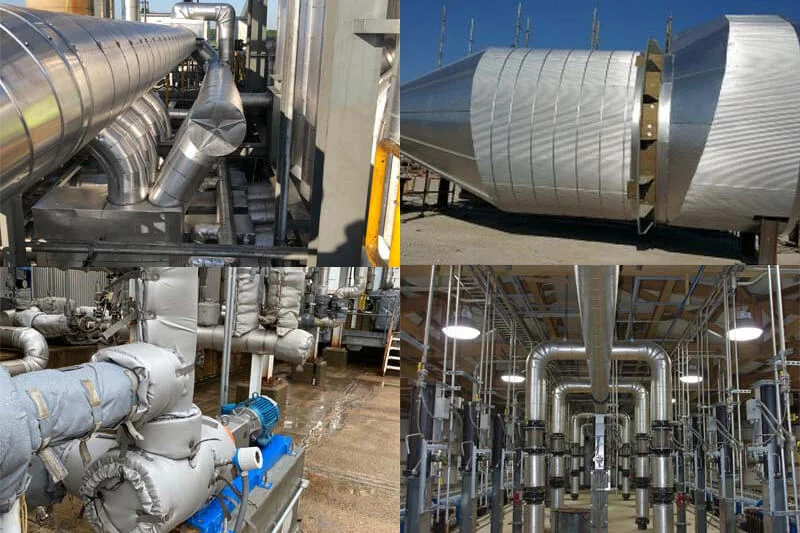

Insulation Services
Thermal insulation refers to materials and techniques used to reduce the transfer of heat between objects or spaces. It is crucial in buildings and industrial applications to improve energy efficiency, maintain comfortable indoor temperatures, and protect against extreme environmental conditions.
Aspects of Thermal Insulation:
Heat Transfer Mechanisms:
- Conduction: Direct transfer of heat through materials (e.g., through walls).
- Convection: Heat transfer through fluids (e.g., air currents).
- Radiation: Heat transfer through electromagnetic waves (e.g., sunlight).
Thermal Resistance (R-value):
- Measures a material’s resistance to heat flow. Higher R-values indicate better insulation.
- R-value depends on material type, thickness, and density.
Environmental and Health Considerations:
- Some insulation materials may have environmental impacts (e.g., production, disposal).
Considerations for indoor air quality and potential allergens.
Types of Thermal Insulation Materials:
Mineral Wool (Rockwool and Glass Wool):
- Made from natural or synthetic minerals (e.g., basalt, silica, recycled glass).
- Good thermal and acoustic insulation properties.
- Resistant to fire, moisture, and pests.
Foam Board Insulation:
- Extruded or expanded polystyrene (XPS or EPS), polyurethane (PUR), or polyisocyanurate (PIR).
- Lightweight, moisture-resistant, and high R-value.
- Used in walls, roofs, and floors.
Spray Foam Insulation:
- Polyurethane or polyisocyanurate foam sprayed into cavities.
- Expands to fill gaps and provides excellent air sealing and insulation.
- Used in walls, roofs, and attics.
Fiberglass Insulation:
- Made from fine glass fibers.
- Cost-effective and widely used in homes and buildings.
- Available as batts, rolls, or loose-fill.
Cellulose Insulation:
- Made from recycled paper or wood fibers.
- Treated for fire resistance and pest control.
- Dense and effective in reducing air movement.
Reflective or Radiant Barrier Insulation:
- Foil-faced materials that reflect radiant heat.
- Installed in attics to reduce summer heat gain.
Natural Insulation Materials:
- Examples include cotton, wool, hemp, and straw.
- Renewable and often have low environmental impact.
- Used in eco-friendly building practices.
Application For industrial Thermal Insulation
Piping and Ductwork Insulation:
- Purpose: Prevents heat loss or gain in fluid-carrying systems (e.g., steam pipes, hot water pipes, HVAC ducts).
- Benefits: Reduces energy consumption, maintains temperature consistency, prevents condensation, and protects against freezing in cold environments.
Boiler and Furnace Insulation:
- Purpose: Insulates boilers, furnaces, and other heating equipment to improve efficiency and reduce heat loss.
- Benefits: Increases operational efficiency, reduces fuel consumption, and enhances safety by minimizing surface temperatures.
Tanks and Vessels Insulation:
- Purpose: Controls temperature fluctuations in storage tanks (e.g., oil tanks, chemical tanks, water tanks).
- Benefits: Preserves product quality, prevents freezing or overheating, reduces energy costs associated with heating or cooling fluids.
Process Equipment Insulation:
- Purpose: Insulates process equipment such as reactors, distillation columns, heat exchangers, and ovens.
- Benefits: Maintains stable process temperatures, improves efficiency of industrial processes, protects equipment from thermal stress, and enhances safety for personnel.
Cold Storage and Refrigeration Insulation:
- Purpose: Insulates cold storage facilities, refrigerated warehouses, and freezer rooms.
- Benefits: Minimizes energy consumption by reducing heat ingress, maintains consistent cold temperatures, and prevents condensation.
Fire Protection:
- Purpose: Provides fire resistance and containment for structural components, equipment, and storage areas.
- Benefits: Delays spread of fire, reduces structural damage, protects personnel and assets.
Soundproofing:
- Purpose: Insulates against noise and vibration in industrial environments.
- Benefits: Improves worker comfort and safety, reduces noise pollution, enhances acoustic performance of machinery and processes.
Safety Shields and Covers:
- Purpose: Shields personnel from hot surfaces or machinery in industrial settings.
- Benefits: Prevents burns, improves workplace safety, complies with safety regulations.
Vehicle Insulation:
- Purpose: Insulates engines, exhaust systems, and other components in vehicles (e.g., automobiles, ships, airplanes).
- Benefits: Reduces noise levels, improves fuel efficiency, protects against extreme temperatures, enhances passenger comfort.
High-temperature Insulation:
- Purpose: Insulates equipment and components operating at high temperatures (e.g., furnaces, kilns, turbines).
- Benefits: Prevents heat loss, maintains process efficiency, extends equipment lifespan, protects personnel from high temperatures.


